Steep streams, turbulent rapids and huge boulders are terrains too rough for most ducks – but perfect for a whio (blue duck). Let’s have a look at these special ducks that adorn our $10 note with our five top facts on whio.

1. If you find whio, you will find a healthy waterway
Whio are an indicator species, which means that their mere presence in a stream or river proves that the water is high-quality and the ecosystem is in balance.
This is because whio will only live in waterways with fast-flowing, clean water with healthy plant life – and lots of freshwater invertebrates for them to eat.
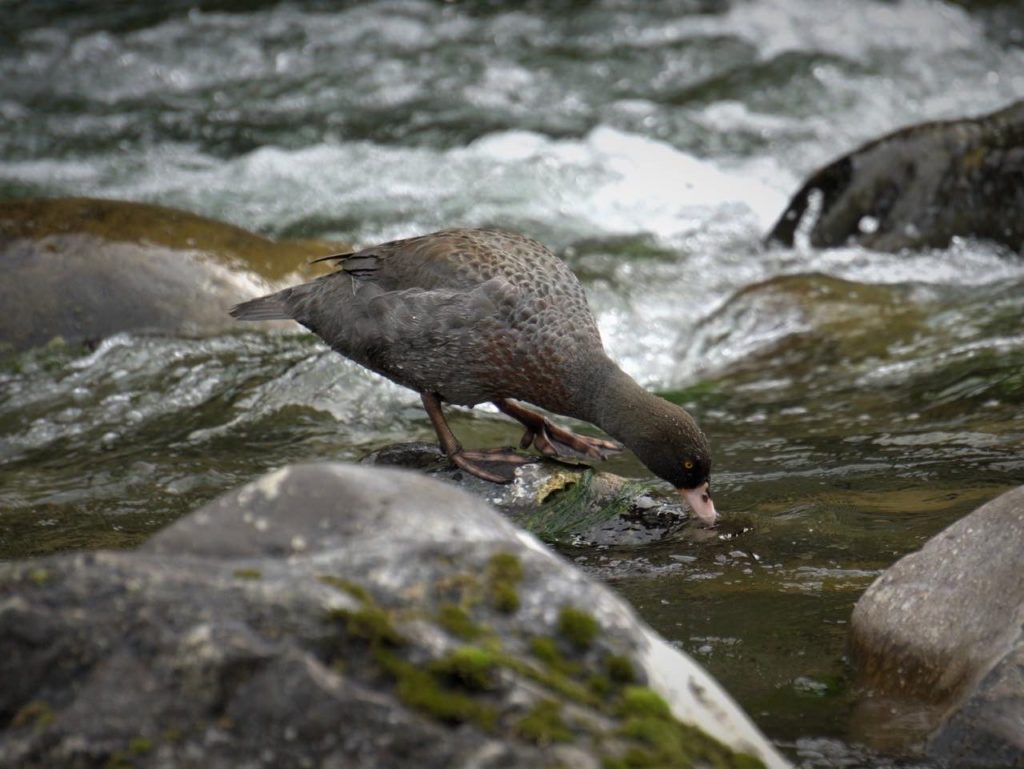
2. A duck rarer than some kiwi species
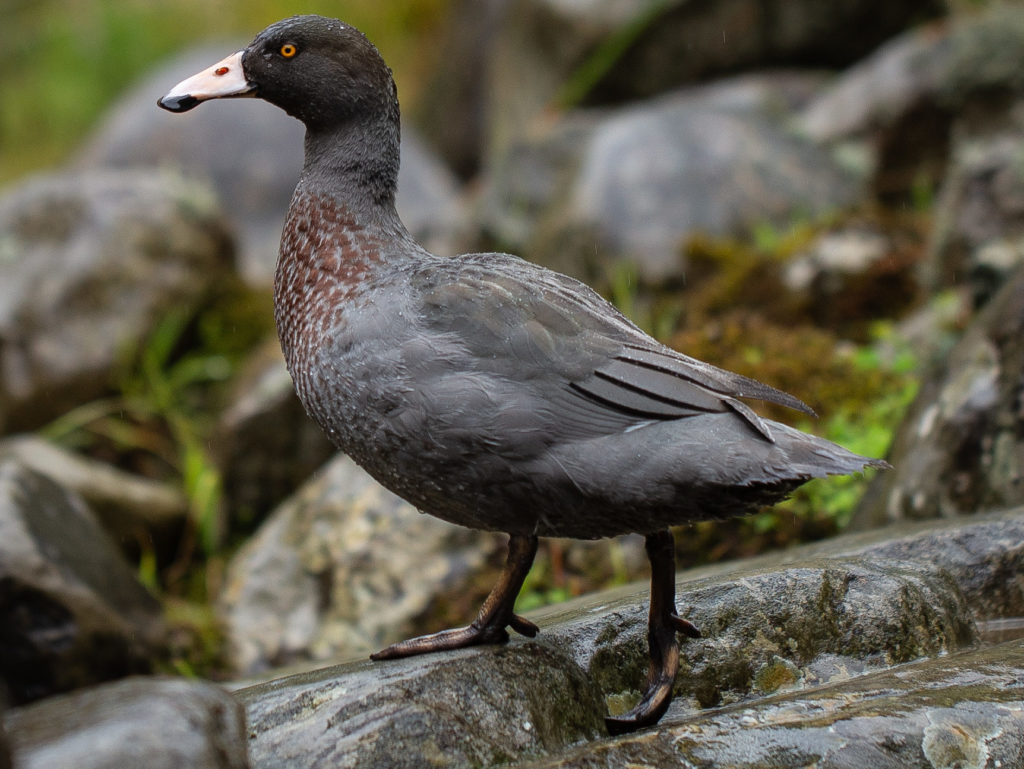
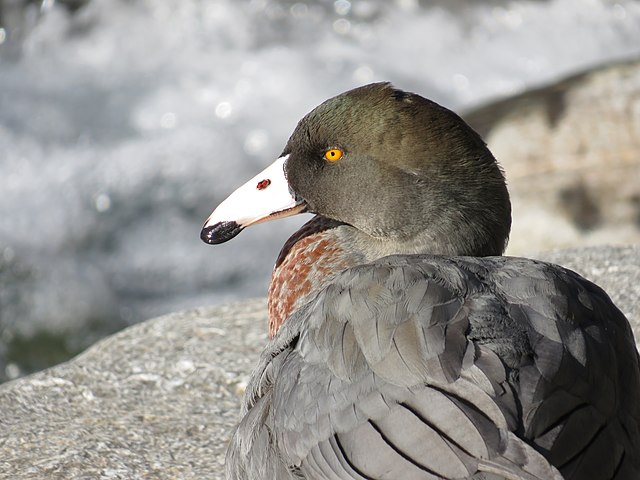
Much like the kiwi, whio are unique to New Zealand. And with fewer than 3,000 individuals left today, they’re rarer than three kiwi species – tokoeka (southern brown kiwi), roroa (great spotted kiwi) and North Island brown kiwi.
Once widespread throughout New Zealand, whio populations have drastically shrunk in the last 100 years. Today, whio are patchily distributed along rivers in both the North and South Island.
The ongoing decline of whio is largely due to predation by introduced species. Stoats are the greatest danger to whio – attacking nesting females and their eggs and chicks. In a study of whio living in an area with no predator control, 60 percent of juveniles didn’t make it to adulthood. More than half of the deaths recorded in the study were due to introduced predators, 90 percent of which were stoats.
The future of whio isn’t assured if threats like introduced predators aren’t managed. Unlike our other endangered species, we can’t move whio to a predator free island to protect them. Whio require large habitats along healthy rivers and streams. This makes the conservation of this species challenging.
3. Moulting season spells danger
Every year from February until May, whio moult, replacing a significant proportion of their feathers. During this time their ability to fly is hampered and they are grounded making them very vulnerable to predation.
The whio’s natural instinct during its moult is to hide away in its nest and in side streams. Before mammalian predators were introduced to New Zealand, this would keep whio safe from overhead attacks from avian predators. Unfortunately, this behaviour makes them a lot more vulnerable to attacks from stoats.
The moulting season can be the most deadly time for whio. In a study of a whio population in an area without predator control, nearly half of the adult females were killed during their moult period.
The good news? Armed with this fact, conservationists know how crucial it is to increase predator control around whio populations during their moulting season.
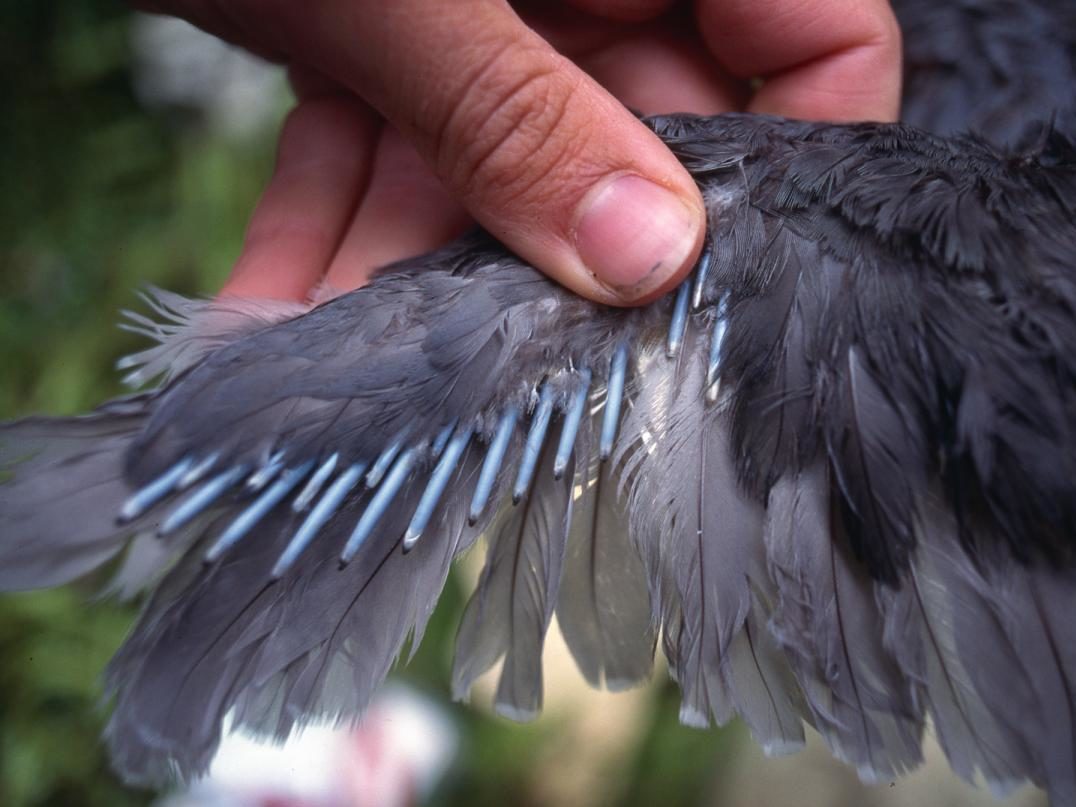
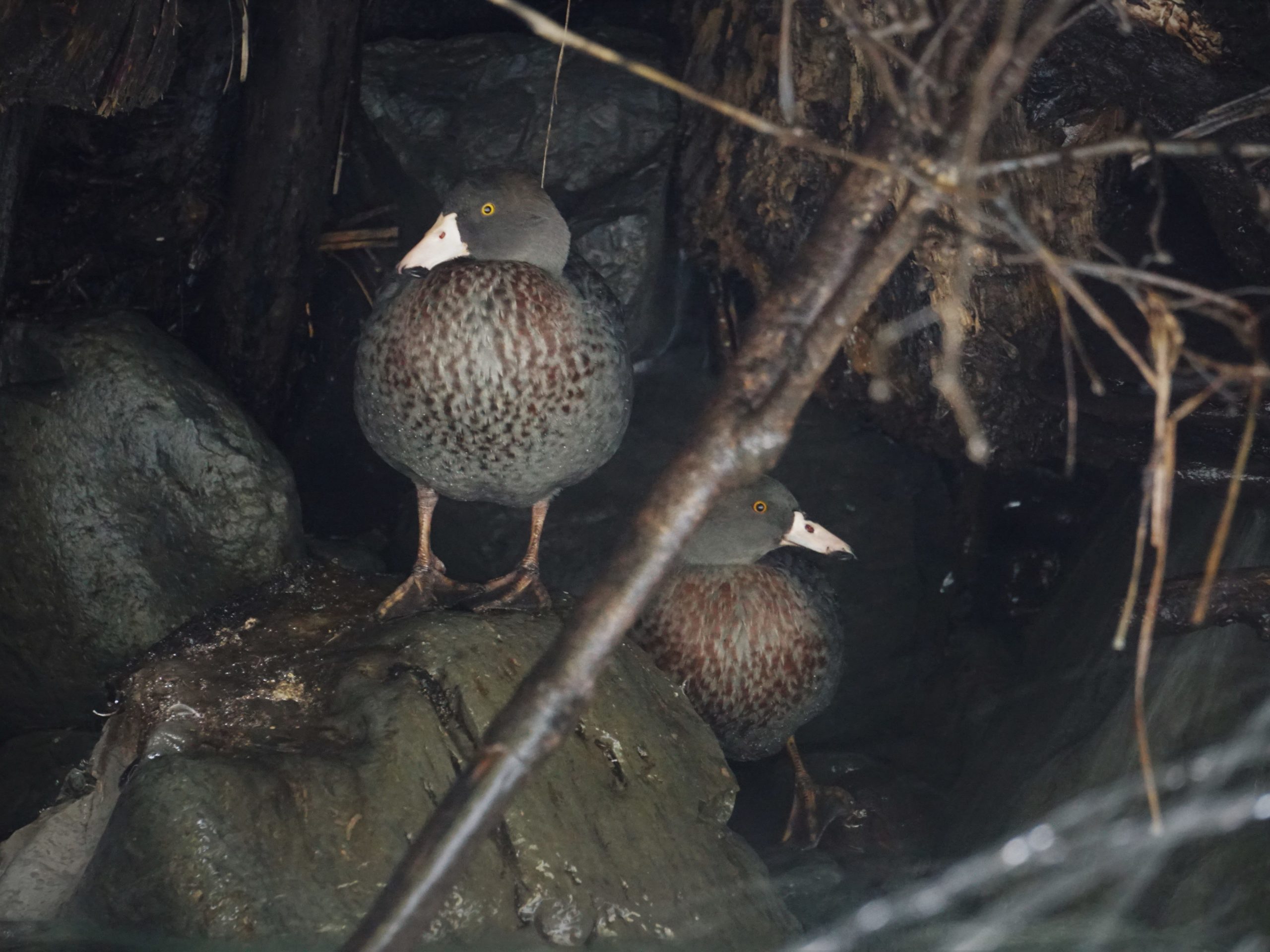
4. Whio ducklings hatch ready to ride the waves
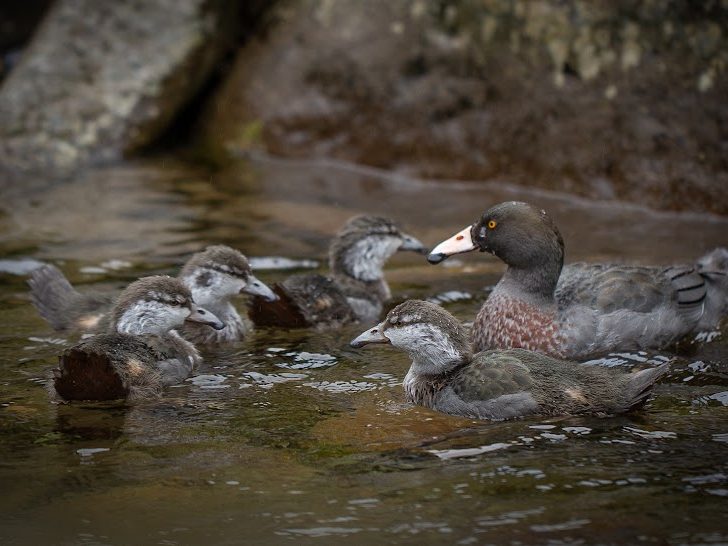
Whio are one of only four duck species in the world who live all year round on fast-flowing rivers. To traverse their rough habitat, whio have large webbed feet and well-developed claws.
Immediately after hatching, whio ducklings are already able to use their oversized feet and strong legs to battle the currents and jump onto large rocks and logs.
5. Fierce fighters for their patch
Whio pairs require a territory of about one km of river and fiercely protect their patch. Whio will even go on patrol, flying low up and down their territory. Encroaching ducks will be chased off or fought.
Juvenile whio can be unwilling to ‘spread their wings’ as they go out in search of their own living space. Generally, whio are described as ‘reluctant dispersers’ meaning they prefer to force their way in between the territories of established pairs, close to where they were raised.
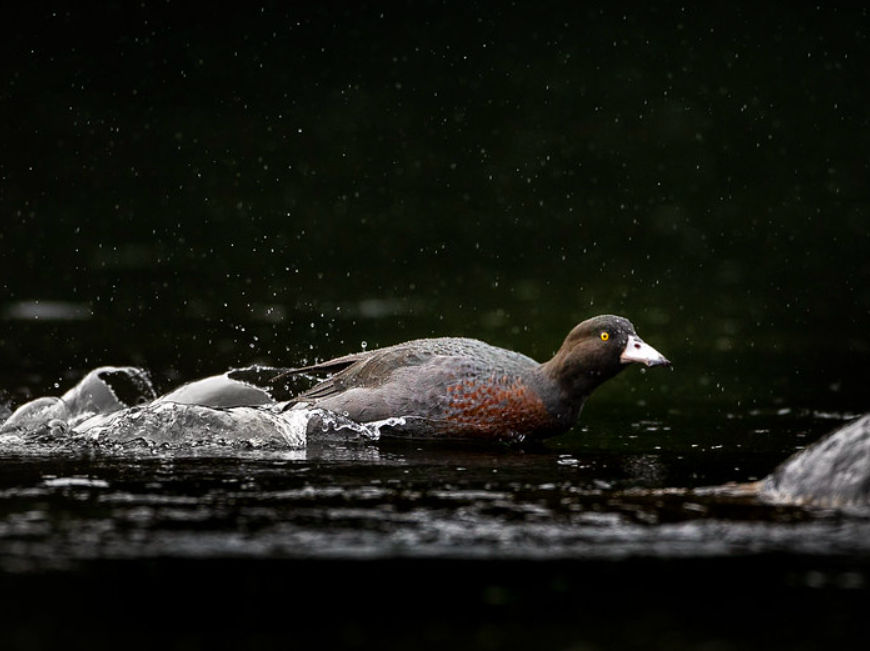
With our help, whio can thrive!
Since predator control efforts began in the Tongariro Forest, whio pairs have jumped from 30 to 109 – exceeding the initial goal of 50 whio pairs. Within their first year of predator control work, Eastern Whio Link had all four whio pairs on their river successfully hatch chicks – a first in the Waioeka Gorge for many years. At present, 20 whio chicks have fledged, more than tripling the current whio population.
If you live in an area with a whio population, you can support local predator control projects through volunteering or donations (such as the Eastern Whio Link in the Waioeka Gorge, Blue Duck Station in the Ruapehu District and Farmers for Whio in the Motueka Valley). You can use our map to search for local groups.
And remember, whio flourish when we give them space, keep their habitat clean and safe, and admire them from a distance. So when visiting areas where there are whio, leave the area clean – and leave your dogs at home, or keep them on a leash.

